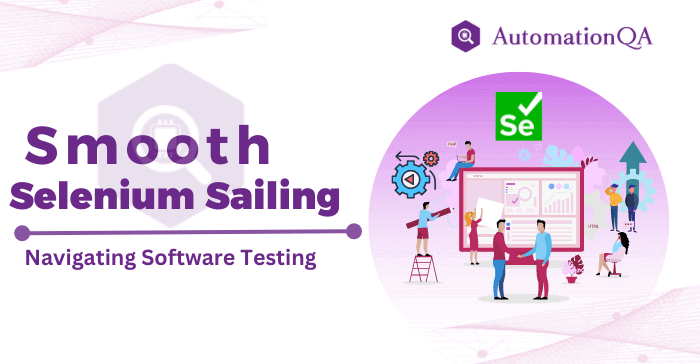
Are you tired of navigating the treacherous waters of manual web testing? In today’s fast-paced digital world, B2B and B2C companies must ensure seamless user experiences. It’s time to hoist the sails and catch the wind with Selenium, the popular testing tool making waves worldwide.
Selenium is the most popular open-source testing tool that enables testers to perform automated testing on web applications. With its automated testing process and simple test script execution, testing feels like a fresh breeze. If you seek to explore the capabilities of Selenium and set sail for smooth Sailing with Selenium, dig here!
What Is Selenium?
This open-source tool is perfect for automating the process of web browser testing. To write test scripts, developers can simultaneously use C#, Java, and Python with Selenium. These scripts interact with web pages, such as clicking buttons, filling out forms, and navigating between pages. Selenium provides a robust testing framework that supports various browsers and operating systems.
Why Should You Use Selenium?
Selenium is easy to use and provides an intuitive interface for web testing. WebDriver, one of the core components of Selenium, offers a robust set of APIs for interacting with web pages. This tool supports script development with different programming languages. Selenium also supports various browsers, including Chrome, Firefox, and Safari, making it a versatile testing tool.
Sailing With Selenium: How To Get Started?
You can download the WebDriver from the official Selenium website or use a package manager such as NuGet or npm. After the WebDriver installation, you can write testing scripts.
Writing Test Scripts
Writing test scripts with Selenium involves using programming languages like Java, Python, or C#. The scripts interact with web pages, such as clicking buttons, filling in forms, and navigating between pages. Selenium-based test scripts can be executed on various browsers and operating systems, enabling developers to test their web applications on different platforms.
Once you have written your Selenium test scripts, you can execute them using various testing frameworks, such as JUnit or TestNG. These frameworks provide a structured way to run your test scripts and generate test reports. Thus you can automate the testing process and save your time and effort.
Selenium also provides a way to perform browser automation in the cloud using services such as Sauce Labs or BrowserStack. These services allow you to test your web applications on various browsers and operating systems, ensuring your application works on different platforms.
Running Test Automation Scripts
After writing your test scripts, you can execute them on various browsers and operating systems, ensuring your web application works seamlessly across different platforms. To run your test automation scripts, you must set up your testing environment by installing the Selenium WebDriver and the necessary browser drivers.
Once you have set up your environment, you can execute your test scripts using frameworks like JUnit or TestNG. These frameworks provide a structured way to execute your test scripts and generate test reports. By running your test automation scripts using WebDriver, you can save time and effort by automating your testing process and ensuring your web application works flawlessly.
Using Selenium Grid For Automated Browser Testing
It is a powerful way to test your web applications simultaneously on multiple browsers and operating systems. Selenium Grid allows you to distribute your test automation scripts across different nodes, enabling you to run tests in parallel and save time. Using cloud Selenium Grid, you can also scale your testing infrastructure per your requirements, ensuring your tests run smoothly during peak traffic.
Cloud Selenium Grid also provides a way to test your web application on various devices, ensuring that your application works seamlessly across different screen sizes and resolutions. With this Selenium Tool, you can achieve efficient and effective browser testing, ensuring your web application delivers a flawless user experience.
Key Takeaways
In conclusion, Selenium is a powerful tool for web testing that provides an intuitive interface and supports multiple programming languages. WebDriver’s robust set of APIs can interact with various web pages simultaneously. Hence, writing test scripts according to the test cases becomes easy. Selenium also supports different OS and browsers, enabling software developers to test multiple web interfaces on different platforms. By automating your testing process with Selenium, you can achieve smooth sailing regarding web testing and ensure your application works seamlessly across different platforms and environments.
So, if you want to start Sailing with Selenium, it’s the right time! It’s easy to learn, supports multiple programming languages, and provides a versatile testing framework. With Selenium, you can save time and effort by automating your testing process, allowing you to focus on developing great web applications.
Contact highly experienced Selenium Testing experts to help you with the web testing processes!
